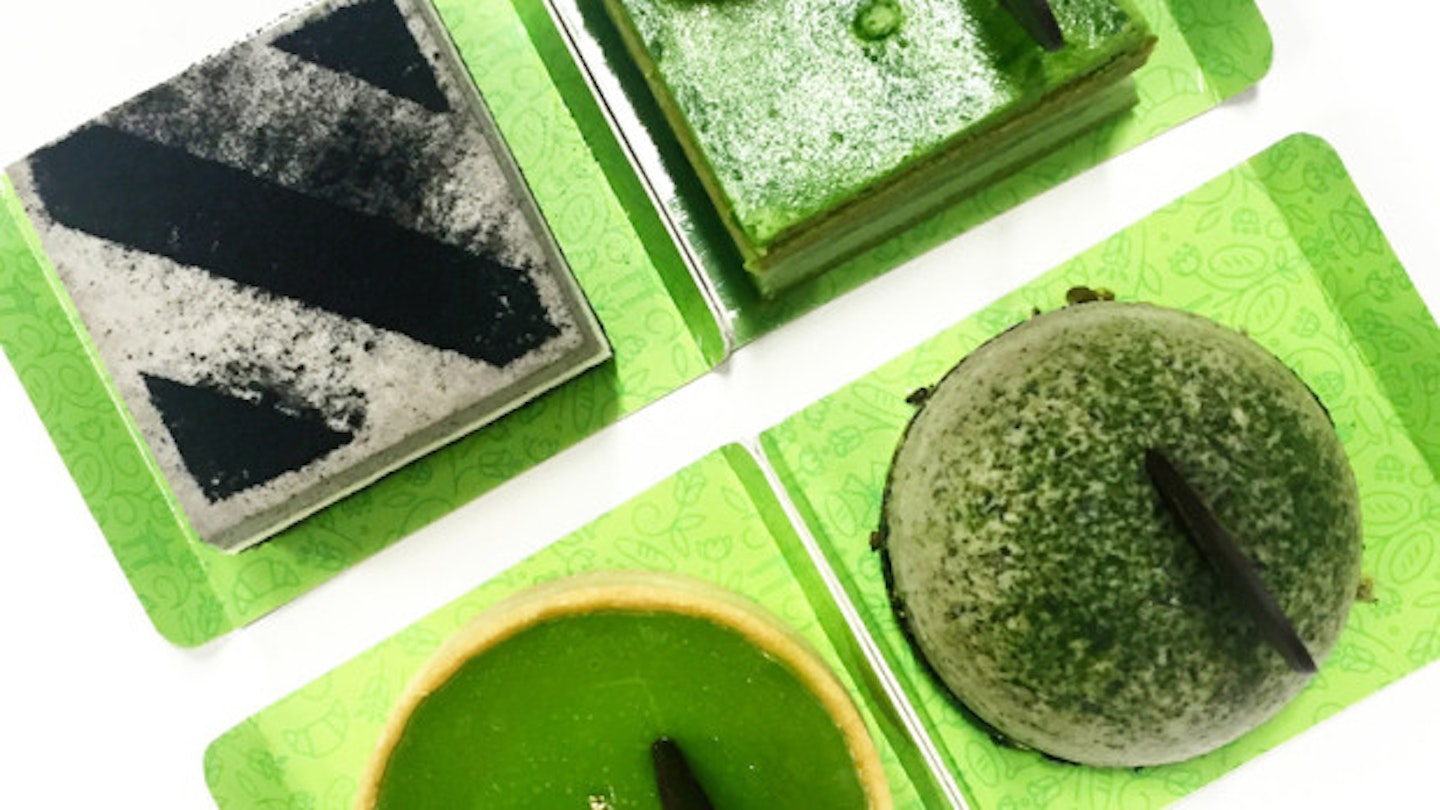'Cream coloured ponies and crisp apple strudels
Door bells and sleigh bells and matcha with noodles'
Put Maria in the 21st century and we all know that 'matcha' would have been one of her favourite things. Along with the rest of the clean-living brigade, she would have been singing about it, tweeting about it and, yes, Instagramming it in the vein of Deliciously Ella who *will. not. stop *spamming my newsfeed with frothy green drinks.
I'm not not grateful, but I do have some questions. Starting with -
What is matcha?
Matcha literally means 'powdered tea' and now refers to a specially grown form of green tea. Specially grown because it’s grown in the shade and is made in a particular way so it can be milled slowly into a fine powder. With normal green tea, the leaves are infused in hot water and the leaves are thrown away. With matcha, you, Mowgli, are drinking the actual leaves. After said powdering they’re mixed with hot water to make a special matcha solution. Et voilà.
What can you do with matcha?
What can’t you do with matcha?! I jest. While you can do a thousand things with matcha, it's most commonly used in drinks. That's tea and smoothies but, crucially, *not *coffee. You'll have seen the phrase 'matcha latte' thrown around. A true millenial misnomer, these aren't coffees, they're just hot drinks which contain a lot of milk.
Matcha's often used in puddings too, so if you want to mix it up try a matcha pastry or a macaroon made with matcha. I hopped along to Pan De Vie to talk to Paul Cheong, a chef who's fusing French pâtisserie with Asian flavours. His green delights range from a petits-four-style creation made with matcha mousse and red beans to a more accessible matcha cheesecake. I say more accessible because matcha's a distinct flavour; the dishes with a higher concentration have an earthy, almost vegetative undernote to them. Definitely worth a try if your sole contact with matcha has been one of those teas from EAT.
Does matcha have caffeine?
Yes! And because you’re eating the actual leaves (see above), you may get up to three times the amount of caffeine in matcha tea than you would from a cup of normal tea. That puts it on about the same level as a cup of coffee. Matcha afficiandos say that compared to the caffeine buzz of coffee, matcha creates an ‘alert calm’ due to a natural substance it contains - i-theanine - which induces relaxation without drowsiness.
Is matcha good for you?
Yep. In fact in terms of health, it is a bit of a wonder drink. Because you ingest the whole leaves (see above) when you drink matcha you’re getting much more concentrated goodness per sip. As well as providing small amounts of vitamins and minerals, matcha is rich in antioxidants called polyphenols, which protect you against heart disease and cancer, and reduce your blood pressure. Blimes.
Where can you buy matcha tea?
Tesco, Sainsbury's and Waitrose all sell matcha teabags, but if you want to make it properly, you’re going to have to to get your hands on some green powder. Look to health food stores, the kind that have big jars of bran in the windows. Holland and Barett sells it but you can buy it more cheaply in bulk online from Amazon etc. If you're in central London, we've heard Postcard on New Bond Street sells some of the good stuff.
If you want to get matcha on the go, however, your best bet is an independent coffee shop. Jameel Lalani, founder of Lalani & Co tea specialists, supplies matcha to some of the best cafes and restaurants in London and recommends Saint Espresso, Curators Coffeeor Story Coffee. Scoop is also apparently excellent for matcha gelato.
How do you make matcha tea?
Lovely Lalani says you make your basic brew like so:
'The best, and most stylish, way to make matcha is still the traditional one: place a teaspoon of good quality matcha into a bowl. Add a tablespoon of cold water. Mix the powder and water together with a matcha whisk so it forms a thick paste. Then add 75ml (an espresso cup) of hot water. Whisk the matcha back and forth until it's frothy.'
The best way to get your matcha frothy is to use a traditional bamboo whisk but we're pretty sure Ella won't be lending us hers any time soon. We say: use an egg whisk and hope for the best. And if you're cooking with matcha, Paul Cheong has graciously given us an insider tip, and that's to use white matcha powder. The normal stuff goes yellow when you bake it. An instagram nightmare.
Like this? Then you might also be interested in:
Which Health And Beauty Drinks Are Actually Worth Your Cash?
Follow Mollie on Twitter @molliewintle
This article originally appeared on The Debrief.
